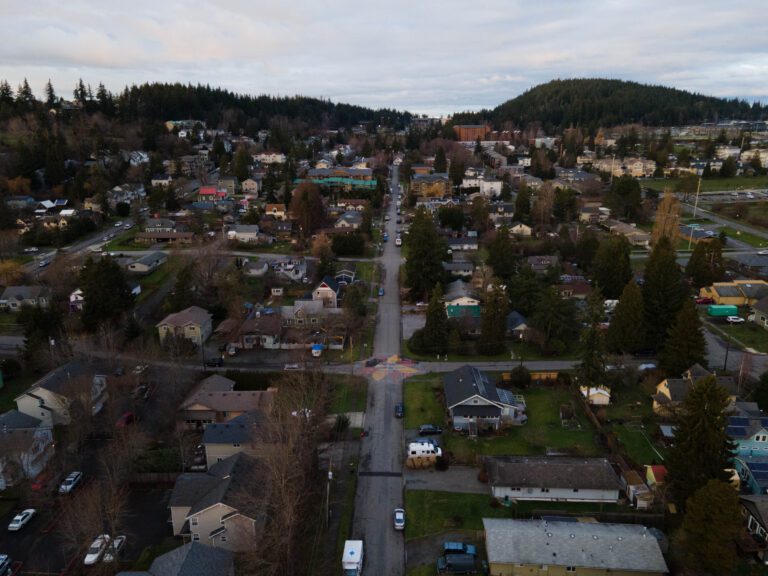In the days since Jimmy Carter’s death, hundreds of tributes and remembrances have recounted meaningful experiences with the humble former president. The country bid farewell Thursday during a national day of mourning and his state funeral.
I have my own memories of Carter from a muggy week in June 1991. I was a young journalist at the Miami Herald documenting the annual Habitat for Humanity International project with reporting partner, Mary Voboril, in what she termed the “overheated heart of Liberty City,” site of a 1980 race riot.
We were embedded as part of a team tasked with building a house for a single mother with seven children. That homeowner, Lenamay Nelson, also put in 400 hours on the crew as part of the Jimmy Carter Work Project, subtitled a “Labor of Love in Liberty City.” The goal for 400 volunteers was to build 14 hurricane-proof homes by the end of five chaotic days. Or get as much done as we could in that time.
Mary and I had requested the assignment to cover the work on Carter’s house. Getting approval to join the team was a monthslong effort. Permission was granted with one requirement — we could document the crew’s work, but we had to also help construct the home while doing so.
The days were long — starting at 7 a.m. sharp and often lasting until dusk or later with only a short break for lunch. As the week progressed, crews stayed to work past dark with floodlights blazing. And the weather was consistently hot and muggy with frequent thunderstorms that delayed progress. Being wet and dirty was a given.
Carter’s Secret Service team was around him at all times — and with his wife, Rosalynn. I can attest they both were extremely focused, hard workers every hour of every day, rarely stopping from helping where needed. Carter was an intimidating presence, judging the work of others and ensuring the tasks were done with precision.
One afternoon, I was helping Mrs. Carter on the exterior of the house, positioning a window in the framed opening. The former president was inside the house slowly becoming peeved with the efforts. At one point, I was surprised to hear him snap at her, but she was always calm and unfailingly patient and responded to him in her quiet way that cleared the air.
The former president was daunting to approach because he was laser-focused on the work with a stern expression and he did not like interruptions. His security detail would not allow him up on the roofs, so he was mostly on the ground, working inside the structures. We all learned to complete assignments carefully and accurately because no one wanted to be the person singled out by Carter for an error.
I was the photographer for the story, so I would start on a house task, then stop and retrieve my camera gear to shoot for 15 to 20 minutes or so, then return to the house construction. This was the daily routine, even when up on a roof hammering shingles or working with wires in the walls or caulking windows. It was not easy, but I savored every minute of that experience with the Carters and our crew.
Mary recalls in her story that Carter, who could eloquently speak off the cuff in groups, was the embodiment of the word mercurial. He was testy, patient, pensive and abrupt. She remembers being up on a ladder while he chided her about nails and board placement. Carter, 66 at the time, had learned carpentry from his father, building furniture in high school. The Habitat project work started when he jogged by a Habitat site in 1984 in New York, noting an opportunity to help. Today, the nonprofit is thriving in more than 70 countries, helping more than 59 million people improve living conditions since 1976. In Whatcom County, a current Habitat project has 50 affordable homes in progress.
On our final day in Liberty City, I got to the worksite early because I wanted a moment to talk to Carter. I spotted him in a doorway two rooms away and he motioned to me to approach. Moving closer, he asked me about the week and gave me a hug, thanking me “for working so hard.”
Those five days left me with enduring impressions about developing personal values and ethics, and working with an extraordinary leader who dedicated his life to selflessly helping others. Carter told us building homes was part of his Christian commitment. Habitat gives us that rare opportunity to make “altruistic sacrifices for the ‘have-nots.’”
Three years ago, I found a print of the Carters from that week in Miami in a box and sent it to the couple via the Carter Center in Georgia. Weeks later, it was returned with his signature. I keep it on my desk as inspiration for a life well lived and the deep satisfaction found in giving back.
It means even more now that they’re both gone. In more than 35 years, the couple worked alongside nearly 104,000 volunteers in 14 countries to build and repair 4,390 homes, according to the Habitat website. Their exemplary humanitarianism will be remembered.
Today I can finally return the compliment: Thank you, Mr. President, for working so hard.
Rhonda Prast is CDN’s managing editor; reach her at rhondaprast@cascadiadaily.com; 360-922-3090 ext. 112.





Guest writer: Diversity, equality and inclusion make America stronger